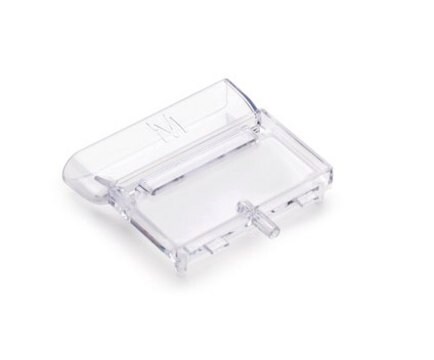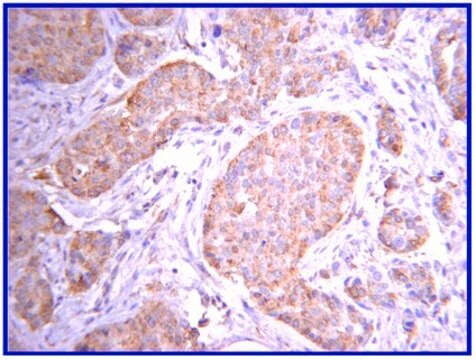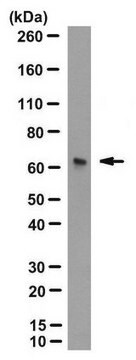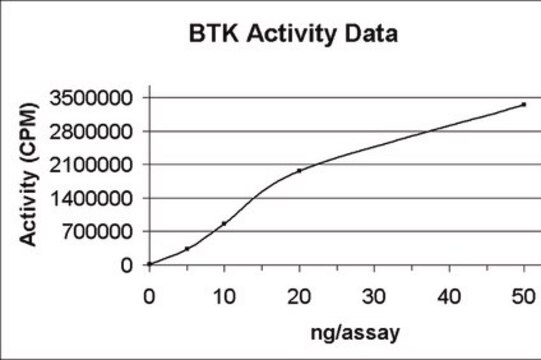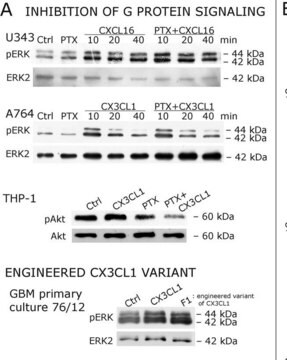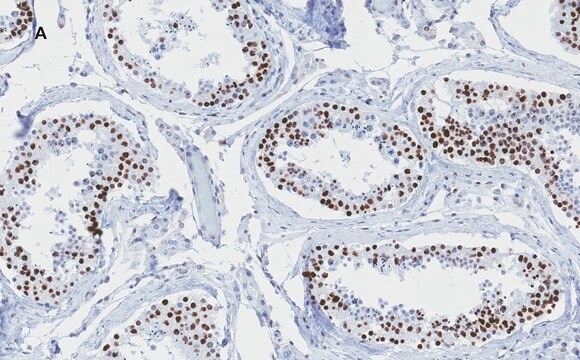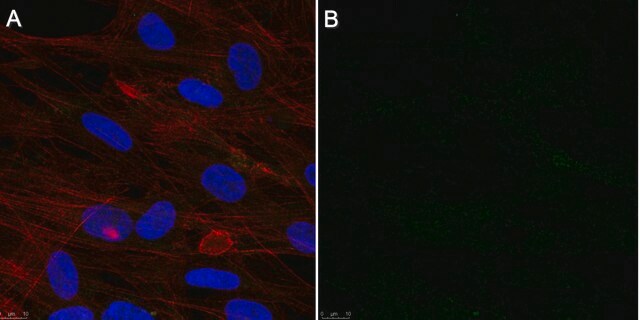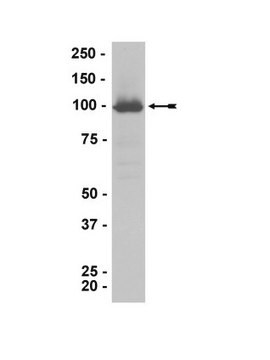05-1154
Anti-JAK1 Antibody, clone 73
clone 73, from mouse
Sinónimos:
Janus kinase 1, Janus kinase 1 (a protein tyrosine kinase) 1, Tyrosine-protein kinase JAK1
About This Item
Productos recomendados
origen biológico
mouse
Nivel de calidad
forma del anticuerpo
purified immunoglobulin
tipo de anticuerpo
primary antibodies
clon
73, monoclonal
reactividad de especies
human, rat, mouse, canine, Xenopus, chicken
técnicas
immunofluorescence: suitable
immunoprecipitation (IP): suitable
western blot: suitable
isotipo
IgG2b
Nº de acceso NCBI
Nº de acceso UniProt
Condiciones de envío
wet ice
modificación del objetivo postraduccional
unmodified
Información sobre el gen
human ... JAK1(3716)
Descripción general
Especificidad
Inmunógeno
Aplicación
Immunofluorescence: A previous lot of this antibody was used in IF.
Optimal working dilutions must be determined by end user.
Calidad
Western Blot Analysis: 1:500 dilution of this lot detected JAK1 on 10 μg of Huvec lysates.
Descripción de destino
Ligadura / enlace
Forma física
Almacenamiento y estabilidad
Handling Recommendations: Upon first thaw, and prior to removing the cap, centrifuge the vial and gently mix the solution. Aliquot into microcentrifuge tubes and store at -20°C. Avoid repeated freeze/thaw cycles, which may damage IgG and affect product performance. Note: Variability in freezer temperatures below -20°C may cause glycerol containing solutions to become frozen during storage.
Nota de análisis
Huvec cell lysate, whole Jurkat cell lysate
Otras notas
¿No encuentra el producto adecuado?
Pruebe nuestro Herramienta de selección de productos.
Código de clase de almacenamiento
10 - Combustible liquids
Clase de riesgo para el agua (WGK)
WGK 3
Certificados de análisis (COA)
Busque Certificados de análisis (COA) introduciendo el número de lote del producto. Los números de lote se encuentran en la etiqueta del producto después de las palabras «Lot» o «Batch»
¿Ya tiene este producto?
Encuentre la documentación para los productos que ha comprado recientemente en la Biblioteca de documentos.
Nuestro equipo de científicos tiene experiencia en todas las áreas de investigación: Ciencias de la vida, Ciencia de los materiales, Síntesis química, Cromatografía, Analítica y muchas otras.
Póngase en contacto con el Servicio técnico